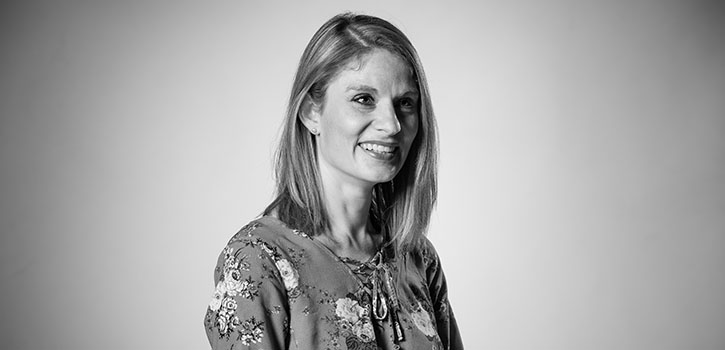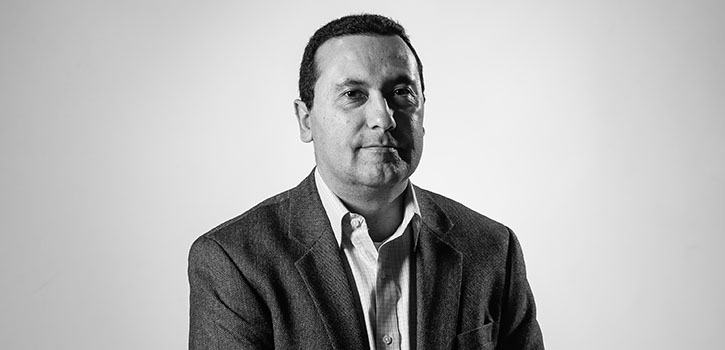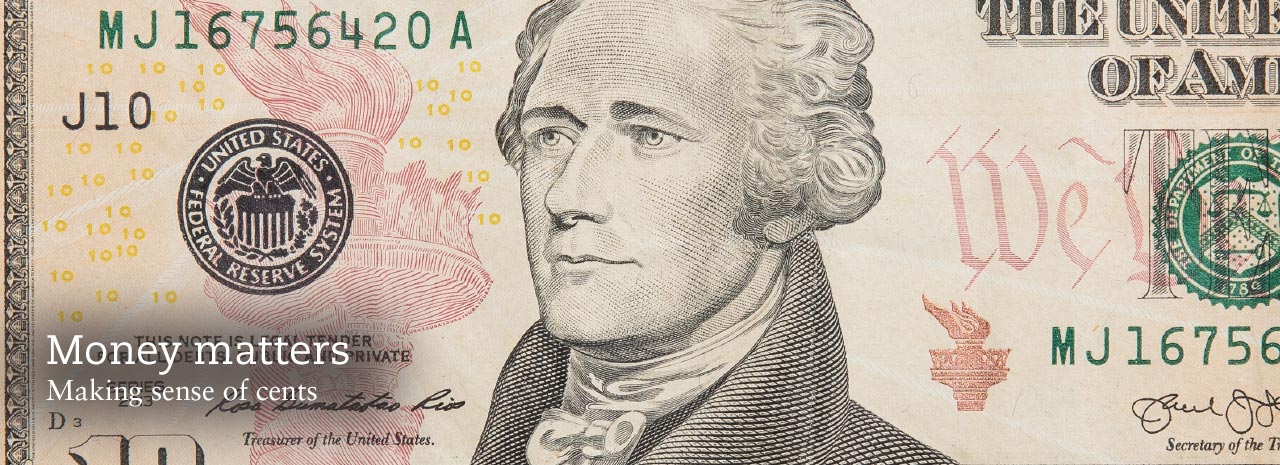Money matters: Making sense of cents
By Mary Lou Peter
“Happily ever after” sounds good for personal relationships, business partnerships and international trade agreements alike, but differing viewpoints and a lack of communication about money can sour the best of connections in all of these realms.
Kansas State University researchers are taking a closer look at financial choices and their implications, from the personal to the global.
Love and money

Sonya Britt-Lutter
Who hasn’t had a tense money conversation with a spouse or partner? “Did you really need another pair of shoes?” “How much should we save for retirement?” “And tell me again why we can’t buy that boat?”
Researcher Sonya Britt-Lutter combines her interest and background in marriage and family therapy and financial planning as she studies topics such as predicting financial conflict in couple relationships. The work is helpful to couples directly, but also to financial planners who work with couples.
“Financial problems are consistently reported as a top stressor for Americans, and disagreement over money matters is a frequently cited source of conflict for couples,” said Britt-Lutter, associate professor and interim director of K-State’s Institute for Personal Financial Planning.
In a recent study, she and colleagues have found that some of the top predictors of financial conflict for husbands and wives include believing the other spends too much money; having financial worries; reporting income differences; and having three or more children. The study is based on data gathered from couples who average 45 to 46 years old and have been married an average of 18 years.
The evidence suggests that money arguments are less related to the amount of family income and more related to decisions on allocating that income.
Britt-Lutter and the researchers also include tips to guide financial planners as they work with couples struggling with money conflicts. The team provides resources, including the Financial Anxiety Scale, which is a series of questions that helps planners assess clients’ financial stress.
In another study, Britt-Lutter and colleagues explore how living together outside of marriage influences net worth and the accumulation of financial and nonfinancial assets during young adulthood. They have found that young adults who live together but do not marry may be less financially prepared for retirement in later years than married couples.
The study results show that married young couples have the highest net worth. First-time co-habitators are the next wealthiest group, and young adults who have lived with more than one partner, but not married, have an average of $33,809 less in wealth. According to the researchers, nonmarried partners tend to accumulate more possessions instead of investing in financial assets.
Britt-Lutter also has worked with Camila Haselwood, doctoral student in personal financial planning, and Emily Koochel, doctoral student in human ecology, to develop a guide to help couples through money-related conversations.
The “Love and Money” curriculum is a partnership with brightpeak financial and allows couples to explore each person’s individual thoughts about money.
The curriculum shows promise as a tool for marriage and financial counselors because it provides tangible ideas on starting important conversations about what money means in the relationship.
Understanding financial decisions

Elizabeth Kiss
In her work as a family resource management specialist with K-State Research and Extension, Elizabeth Kiss conducts research and takes money-related knowledge to Kansans. She does this through publications, presentations and the local work of K-State Research and Extension agents across the state.
Kiss, also an associate professor of family studies and human services, recently has collaborated with specialists at other universities to study how young adults make financial decisions on four topics: financial goals, homeownership, retirement planning and student loans. Many study participants’ families experienced the housing market collapse and mortgage credit crunch during the Great Recession of 2007-2009.
The team has found that student loan debt is a primary factor weighing on financial decisions. The researchers also have discovered that many participants are sequencing financial priorities, rather than funding them simultaneously.
As a result, they are delaying homeownership and retirement savings. “Phrases like ‘once I have …,’ ‘after I …’ and ‘as soon as …’ were commonly provided in responses,” Kiss said.
“This indicated a hesitancy to fund certain financial goals until achieving others.”
The study results can sharpen financial planners’ educational approaches, as well as empathy and awareness of how and why young adults make certain choices, Kiss said. The study is part of a multistate project supported by the U.S. Department of Agriculture National Institute of Food and Agriculture.
Another study by Kiss and colleagues addresses young adults’ lack of understanding of health insurance and looks at ways, such as delivering information through social media, to bridge the knowledge gap.
Previous studies have shown that nearly 50 percent of consumers lack confidence in selecting a health insurance plan and many do not understand basic terms such as premium, deductible, copayment or provider network, Kiss said.
Her study is part of the national Cooperative Extension System’s goal to be a leader in health research and education, much like how extension has worked to improve agriculture for more than 100 years. Health insurance literacy is one priority in that effort.
The study includes an online survey of millennials to gain an understanding of that age group’s health insurance-related issues and preferred social media platforms and text messaging formats.
Although four out of five respondents indicate they have health insurance, 23 percent do not know their insurance plan, 12 percent indicate a Marketplace health plan, 27 percent are covered by a Health Maintenance Organization and 29 percent are covered by a Preferred Provider Organization. The social media platform checked most frequently by respondents is Facebook, followed by Snapchat, Instagram and Twitter. Many also receive text messages, most from their closest friends but also from other sources.
Based on those insights, Kiss and her colleagues have developed a mobile messaging pilot project to increase millennials’ health insurance literacy with quick and easy-to-understand “content bites” delivered through social media and text messages. The final study, expected in mid-2019, will shed light on some of the best ways to convey educational messages to a generation more comfortable with communicating through technology.”
A global view

Peri da Silva
Peri da Silva, professor of economics, works with economists around the world by looking at money from the global perspective, specifically focusing on trade agreements.
Da Silva was born in Brazil and became interested in international economics during college there. His interest was piqued by Brazil’s protectionist trade policies, which led to higher prices for cars and other consumer goods for Brazilians compared to other countries.
“The opportunities for corruption of public officials in a system where politicians can apply trade barriers without respecting international rules involving trade agreements has always been visible, although not easily proven in a court of law,” said da Silva, who has taken an in-depth look at such trade agreements as the North American Free Trade Agreement, or NAFTA, and other international pacts.
Recent work by da Silva and his colleagues, published in the Journal of Political Economy, focuses on the degree of cooperation among World Trade Organization, or WTO, members. WTO-sponsored agreements are designed to promote cooperation among members in order to thwart countries’ abilities to apply tariffs and exploit their market power in international markets.
In the study, the economists measure what would happen if countries abandoned their WTO commitments and applied noncooperative tariffs as would happen in a global trade war. Their estimates indicate that the average world exporter would face an increase in tariffs of 32 percentage points, whereas U.S. exporters would face an average increase of 27 percentage points.
“These outcomes suggest that a full-blown trade war would have no winner,” da Silva said.
He noted that some of the world’s most vulnerable populations may be harmed most. The researchers’ work has been the basis for articles in The Washington Post and The Economist, among others.
The annual value of U.S. imports and exports adds to about 29 percent of the U.S. national income, da Silva said, and the value of trade even can exceed total income. For example, in Switzerland the annual value of imports and exports is 115 percent. That happens because there is double-counting in international trade when countries also trade intermediate products.
“These facts illustrate the importance of international trade,” da Silva said. “International agreements represent a rules-based system where countries can voluntarily engage in international trade without fearing sudden changes in barriers and rules.”
Without trade agreements, a government can take measures to benefit a group of business owners and workers by imposing a higher tariff on imported goods, da Silva said. The tariff negatively affects foreign businesses and workers because it transfers the domestic policy cost to them. This action is usually not allowed by trade agreements.
An alternative, he said, would be for a government to raise taxes and distribute the proceeds to domestic groups it wishes to provide a benefit. International agreements do not prevent this action as long as foreigners are not forced to pay for the benefit.”


